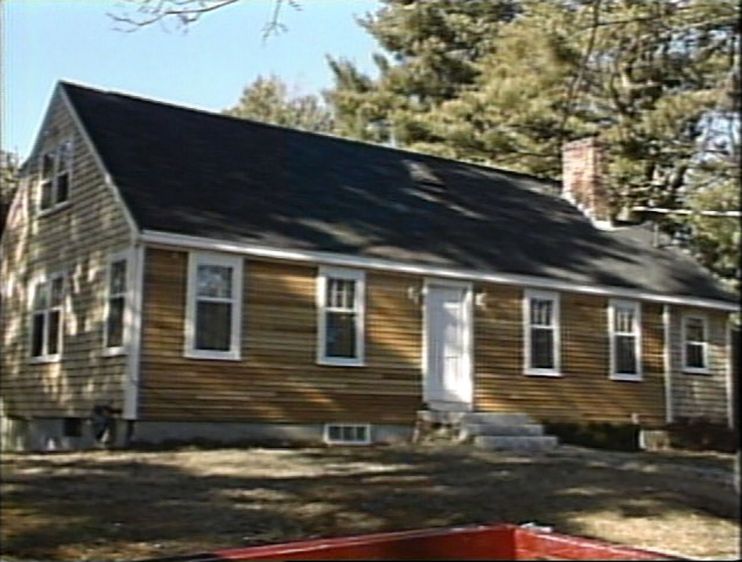Most suburban houses built in the 1940s and 1950s don’t have great architectural or historic value, but they are often an economical choice for first time homeowners. This proved to be the case with the first project of This Old House‘s eighth season, a 40-year-old Cape Cod-style home in Reading, Massachusetts. Homeowners John and Claire fell in love with the traditional lines and unspoiled quality of this two-story clapboard-sided “gem” on a quiet side street and purchased the Cape in early 1986 as their first home. But the lovely house was not without its problems, including an out-of-date, cramped kitchen and a living room too small for comfort. The two bedrooms on the second floor were small and dark; steeply sloping walls reduced the already-limited space. Overall the interior layout of the house needed revision in order to create a smoother flow of traffic and provide more living space.
However, this half Cape (a Cape-style house in which the front door and chimney are placed to one side of the house and two windows occupy the other half) was built with expansion in mind, as evidenced by the parcel of open land beside it. After defining the house’s problems—and potential—with John and Claire, the crew worked with architect Scott Finn to develop a plan to fill the homeowners’ needs while preserving the unspoiled, authentic feel of their Cape. The plans kept the half Cape’s traditional boxy proportions while enlarging it to a full Cape with a central entrance to replace the awkward side entry.
Inside, the wall between the living room and kitchen was demolished to create a spacious “country kitchen,” complete with fireplace and a view straight through French doors opening on to a new deck. At the other end of the house, a new family room was added, creating 250 square feet of additional space. Upstairs, the full shed dormer enlarged the bedrooms and allowed for installation of a second bathroom.
Outside, in a nod to Yankee frugality, the crew clad the front façade with clapboards while the gable ends and rear of the house were shingled. Proud but frugal New Englanders reserved prime materials for the front of the house and turned to more economical materials for seldom seen corners of the house. In this case, the crew applied the clapboards in a fan motif, layering them tightly at first and then slowly revealing more of their face until they reached the window sills when they were laid at a consistent width up the rest of the house. While the TOH crew undertook this old-fashioned technique to achieve an authentic look, settlers originally clad their houses this way to fatten up the lower courses of clapboards, which were often subject to splashing soil and rain in the changeable New England weather.
Throughout the expansion, John and Claire worked side by side with the crew, pouring sweat equity into every facet of the renovation. From laying the foundation to shingling the roof, they kept their budget in line by doing the work themselvesÑwith the help of This Old House‘s experts. In the end, their tiny half Cape had grown to a spacious modern home with a decidedly traditional New England style.

